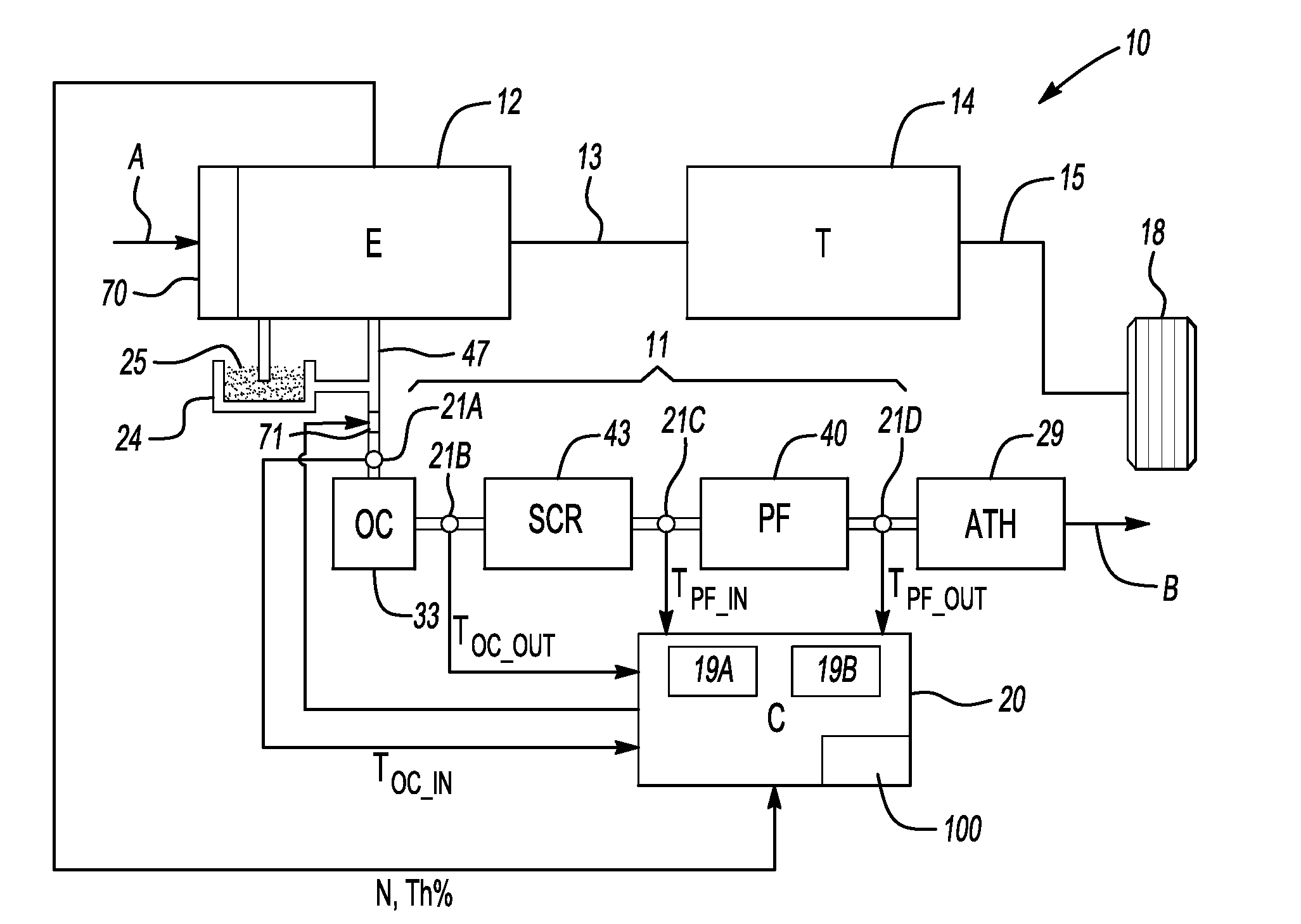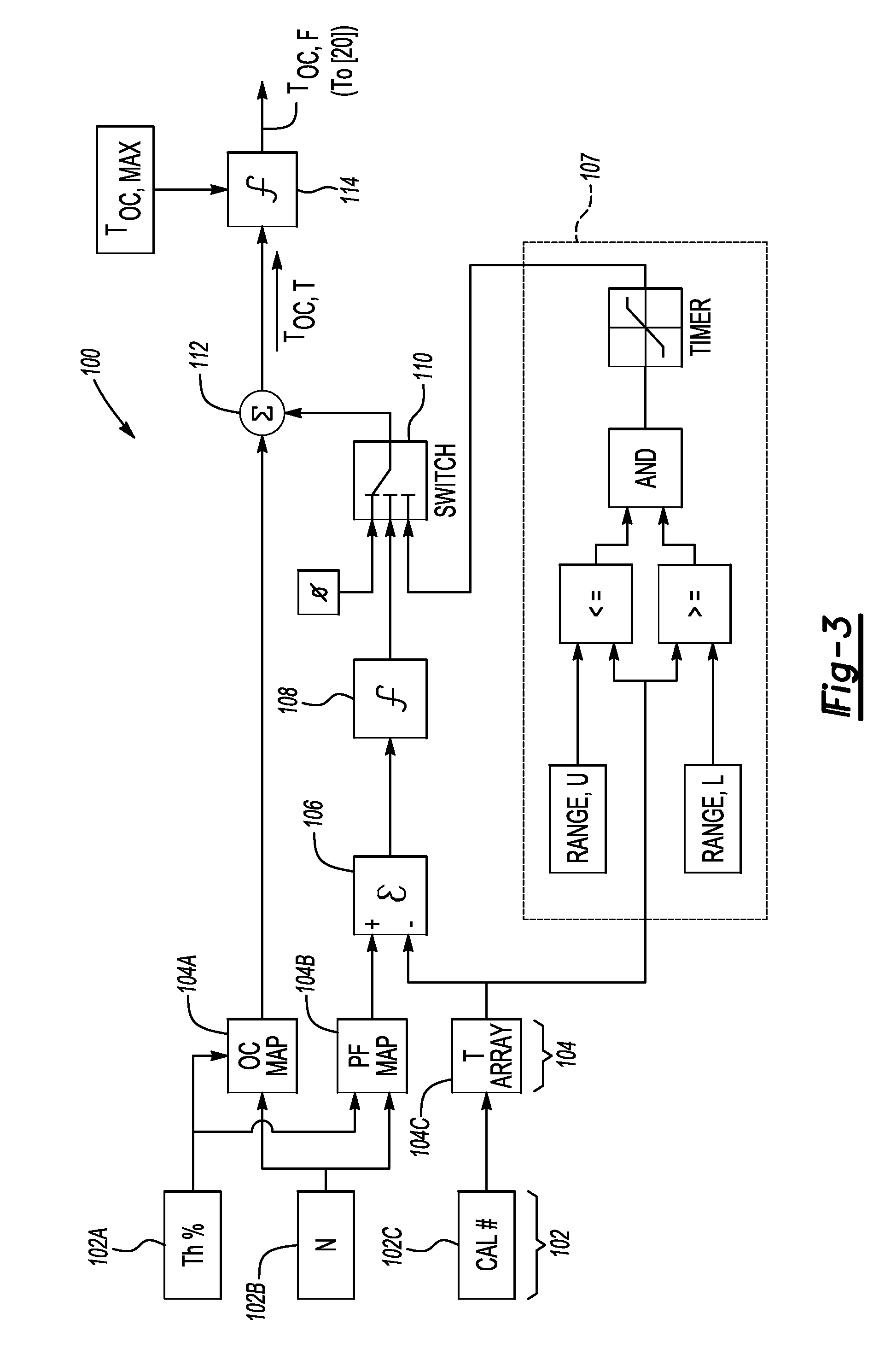Apparatus and Method for Optimizing Exhaust Temperature Control in a Vehicle During Particulate Filter Regneration
a technology of exhaust gas and temperature control, applied in the direction of electrical control, machine/engine, electric control of exhaust gas, etc., can solve the problems of increasing the temperature of exhaust gas and the same temperature control method being less than optimal, so as to reduce the occurrence and/or severity of temperature overshoot or oscillation, the effect of large thermal mass
- Summary
- Abstract
- Description
- Claims
- Application Information
AI Technical Summary
Benefits of technology
Problems solved by technology
Method used
Image
Examples
Embodiment Construction
[0013]Referring to the drawings wherein like reference numbers represent like components throughout the several figures, and beginning with FIG. 1, a vehicle 10 includes an engine (E) 12 and a transmission (T) 14. The engine 12 is configured as a conventional internal combustion engine, and therefore is operable for combusting a supply of fuel 25 drawn from a sump or a tank 24. The fuel 25 can be diesel or gasoline depending upon the configuration of the engine 12. The engine 12 has a governor or a throttle 70 operable for admitting a predetermined amount or percentage of the fuel 25 and air (arrow A1) as needed into the engine 12 depending on the position of the throttle 70, as will be understood by those of ordinary skill in the art. Combustion of the fuel 25 generates exhaust (arrow B), which is subsequently discharged through an exhaust manifold or a pipe 47 into an exhaust system 11. Energy released by the combustion of the fuel 25 produces a rotational force or torque on an in...
PUM
 Login to View More
Login to View More Abstract
Description
Claims
Application Information
 Login to View More
Login to View More - R&D
- Intellectual Property
- Life Sciences
- Materials
- Tech Scout
- Unparalleled Data Quality
- Higher Quality Content
- 60% Fewer Hallucinations
Browse by: Latest US Patents, China's latest patents, Technical Efficacy Thesaurus, Application Domain, Technology Topic, Popular Technical Reports.
© 2025 PatSnap. All rights reserved.Legal|Privacy policy|Modern Slavery Act Transparency Statement|Sitemap|About US| Contact US: help@patsnap.com



